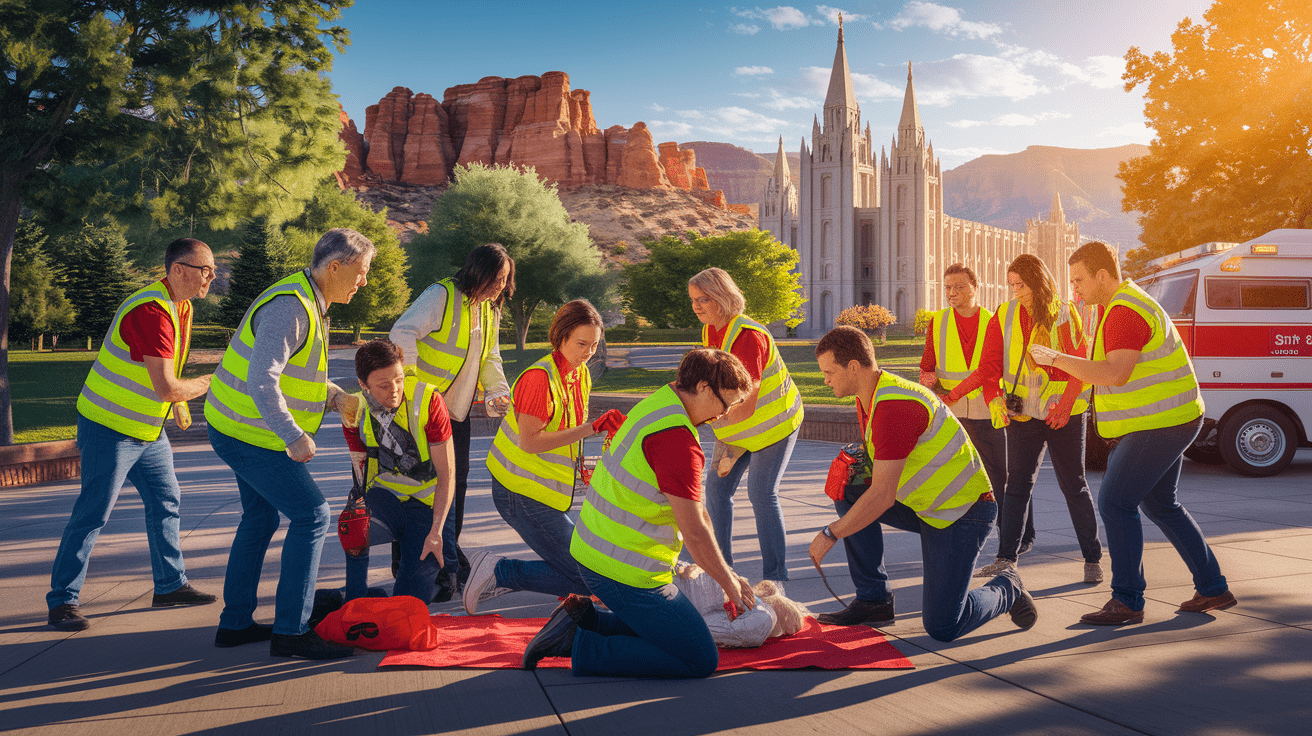Responding Together: Your Essential St. George Community Emergency Response Volunteer Guide
Introduction — Get Involved Fast
If you’ve ever wondered how you can make a real difference in St. George during a crisis, joining the local community emergency response effort is one of the best ways to help. We have a strong tradition here of neighbors stepping in when needed, and the Community Emergency Response Volunteer Program makes it easy to get involved quickly. Whether it’s a winter storm, flooding, or another emergency, trained volunteers are ready to assist, complementing our official responders and keeping everyone safer.

Program Overview and Key Volunteer Roles
The St. George Community Emergency Response Volunteer Program is built around everyday people like you who have received training in basic disaster response skills. It follows recognized frameworks similar to the national Incident Command System, so everyone knows their role when the time comes.

Typical volunteer duties include:
- Helping manage emergency shelters, including welcoming evacuees and coordinating supplies.
- Providing basic first aid and assisting with medical triage if needed.
- Supporting light search and rescue or fire safety measures.
- Handling fan-out communication to ensure residents get updates.
- Offering logistical support such as setting up equipment or organizing relief materials.
As outlined in the Community Emergency Plan, each role is assigned with care to keep the operation smooth and efficient, integrating volunteers seamlessly with professional emergency services.
Activation and Emergency Shelter Operations
In St. George, when an emergency affects our area, the Emergency Management Director may order activation of the temporary community shelter located at the Fire Department Training Room, 3 School Street. This space is powered by a generator, pet-friendly, and staffed by trained volunteers who usually live nearby, making response times quick.

Once activated, residents are informed through public announcements made via local media, the town’s website, and a 24/7 hotline. Volunteers at the shelter play crucial roles—welcoming evacuees, ensuring their immediate needs are met, and keeping the facility running efficiently for however long it’s required. You can read more about shelter operations on the official St. George shelter page.
Training Requirements and Ongoing Preparedness
Effective aid during a disaster starts with solid preparation. Most volunteers complete a Community Emergency Response Team (CERT) course, gaining skills in fire suppression, basic medical operations, and search-and-rescue techniques. CERT also offers practical shelter management training.

Training in St. George often includes:
- Basic first aid and medical triage practice.
- Fire safety and how to use extinguishers.
- Light search and rescue methods.
- Emergency communication procedures.
- Hazard mitigation and disaster simulation exercises.
Guidance from resources like the Emergency Preparedness Guide and Southwest Utah Public Health resources ensures volunteers are well-prepared. The CERT program overview offers details on skills and readiness expectations, and regular drills keep your knowledge fresh.
Communication Framework and Logistics Support
An organized response is only possible when communication flows smoothly. Volunteers help maintain updated contact lists for team members and key support services so information gets out fast. This might mean rapidly calling other volunteers, distributing updates to the community, or relaying needs to coordinators.

On the logistics side, volunteers ensure that supplies—from blankets to first aid kits—are ready and transported to where they’re most needed. Setting up safe sleeping areas in a shelter or arranging for pet accommodations are all part of the job.
Building Community Resilience Together
Community resilience means being able to withstand and bounce back from emergencies. In St. George, it’s a shared responsibility that pairs citizen volunteers with professional responders. That partnership keeps recovery times shorter and reduces overall harm.
The town’s emergency management office, much like the approach described by Washington County Emergency Management, encourages involvement, provides tools, and supports all levels of engagement—from attending an emergency preparedness workshop to becoming a fully certified volunteer. When more people join in, the network of readiness grows stronger.
Conclusion — Ready to Serve
Becoming a community emergency response volunteer here in St. George is straightforward, and the rewards go far beyond the skills you gain. You’re joining a team that’s committed to protecting lives and supporting neighbors when it matters most. With training, readiness, and a shared dedication, we can all play a part in keeping our town safe—even on its most challenging days.







